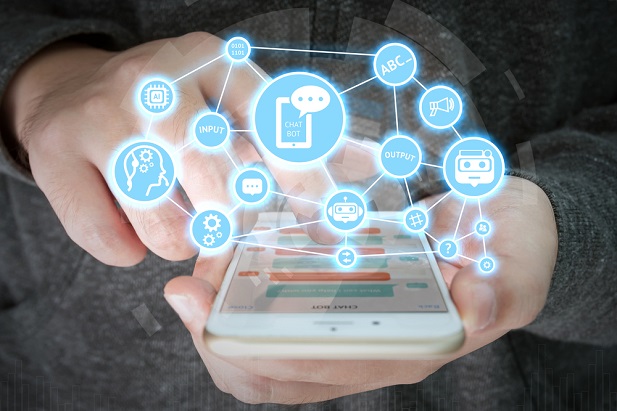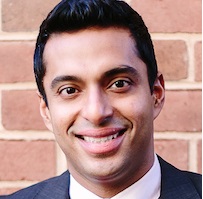 Does the lack of internet access affect the care that at-risk populations receive? Are the benefits of digital care limited by privilege? (Photo: Shutterstock)
Does the lack of internet access affect the care that at-risk populations receive? Are the benefits of digital care limited by privilege? (Photo: Shutterstock)
Health care disruptors are betting the farm on digital health technology, and they have the funds to validate their enthusiasm. Investments in digital health startups came in at a staggering $8.1 billion at the end of 2018, marking an increase of 42 percent from 2017, according to Rock Health. While investments are slowly beginning to level out in 2019, analysts see this as a sign that the industry is maturing; not, as some thought, a signal of pending collapse.
Health tech has been touted as the cure-all for financial problems; for physician shortages; and most importantly, for the disparities in care that can leave patients with high socioeconomic risk falling through the gaps.
Related: FCC approves $100 million telemedicine pilot
But, in the midst of the accolades, there are a few concerned voices that don't see health tech delivering on this last promise; voices that are speaking out for the vulnerable, like Medicaid beneficiaries, whom they assume may not have broadband access or a smartphone. With the average price tag on a smartphone reaching $535 in 2019, according to Statista, the benefits that mobile technology provides can seem like a privilege reserved for the rich.
It is true that traditionally at-risk populations—economic or geographic—are much less likely to have home broadband service—of populations making less than $30,000 annually, only 56 percent have home broadband internet; in rural communities, regardless of income, only 63 percent have broadband, according to Pew Research Center.
However, mobile broadband is not limited to the advantaged. Ninety percent of people in the United States have access to mobile broadband coverage (2G/3G/4G, etc.), which uses cell towers to transfer data to mobile phones and extends service to those disadvantaged by income and distance.
With our society increasingly dependent on the internet, particularly when it comes to essential activities like finding employment — a Pew survey of recent job seekers found that 90 percent had used the internet to research jobs, and 84 percent had applied for a job online — smartphones have actually become a necessity for disadvantaged populations.
Smartphone ownership is at 71 percent both for low-income and rural communities, and a significant percentage of economic and geographic at-risk populations are reliant on smartphones for internet-access (26 percent and 20 percent, respectively). For users in these demographics, smartphones are often a necessary line item bumping other things out of the budget, taking precedence over technology like a laptop or tablet.
So what's the myth and what's reality? Does the lack of internet access affect the care that at-risk populations receive? Are the benefits of digital care limited by privilege?
The answer, as is often the case, is yes and no.
What to do
Solutions that leverage bluetooth-connected devices sidestep the issues of WiFi access — bluetooth technology is a short-range wireless communication between two devices that does not rely on the internet at all. If a bluetooth-connected device is being used to check glucose levels, for example, that device can communicate those levels back to a smartphone without needing to access WiFi.
However, the digital divide manifests itself when that data needs to be communicated to an external user. Without WiFi, a smartphone will use its cellular network to transmit data. This is fine up to a point, but many high-end data plans are expensive, and many users in at-risk populations — the same users who are often totally dependent on their smartphones for internet-access — frequently max out their data plans before the end of a billing cycle.
Therefore, depending on the amount of data that a digital solution requires, low-income and rural health populations could still be beyond the reach of its benefits, despite mobile broadband access.
There are some possible ways to bridge the gap, some more proximate than others. Mobile app-based solutions often require most of their data usage upfront, in a one-off download of the app — the actual transmission of information to a provider requires very little data use. If patients download the app in-office, in conjunction with the prescription of the app, most of the heavy-lifting that would fall to a cell network can be supported by the health system's WiFi.
Additionally, the majority of cell phone plans, while they may have limited data, offer unlimited texting. A solution that enables manual transmission of information through texting can avoid the challenges of data overages. Even without unlimited data; basic, text-based binary communication uses very little data.
Penn Medicine's Heart Safe Motherhood (HSM) program is one such example of this type of solution. In 2018, HSM published a randomized controlled trial comparing traditional office-based follow-up with remote text-based remote monitoring during the postpartum stage. They demonstrated a 110 percent increase in blood pressure data captured 10 days after the postpartum visit, a 390 percent decrease in 7-day readmissions for postpartum hypertension, and an 18 percent increase in postpartum visit attendance.
Graceful degradation of service is another option, although not as far along the adoption curve. An engineering tactic, graceful degradation essentially anticipates failures in the system (that might result from say, slow service due to data overages), and plans for them, shutting down non-critical functions so that the critical functions can still run effectively.
Another option is to provide data along with the solution, embedding a cellular chip into the digital solution to deliver coverage along with the device. This preloading of data enables a provider to assume connectivity on delivery, regardless of access issues. Although less cost-effective upfront for the provider than an option that leans on user data, the security of a guaranteed connection that a "prepaid" solution delivers can be a huge cost saver in the long run. That enables use of the device and potentially improves outcomes and reduces readmissions.
As task-forces in the United States are assembled to address the issues of accessibility for low-income and rural populations, it is important to have a clear view of the problem. Access to the internet and smartphone ownership, as it turns out, are not part of the problem, but could be the beginning of real solutions.
Read more:
- Can apps slay the medical bill dragon?
- Digging deeper: Health data mining platforms surge ahead
- Hospitals and health systems too slow In responding to consumer demands
Anish Sebastian co-founded Babyscripts, a company that offers Internet-enabled pregnancy products and services, in 2013.
© 2025 ALM Global, LLC, All Rights Reserved. Request academic re-use from www.copyright.com. All other uses, submit a request to [email protected]. For more information visit Asset & Logo Licensing.








